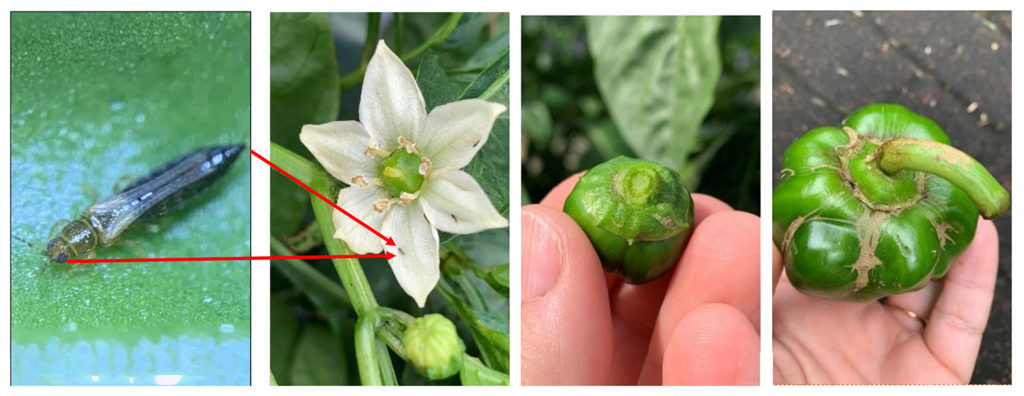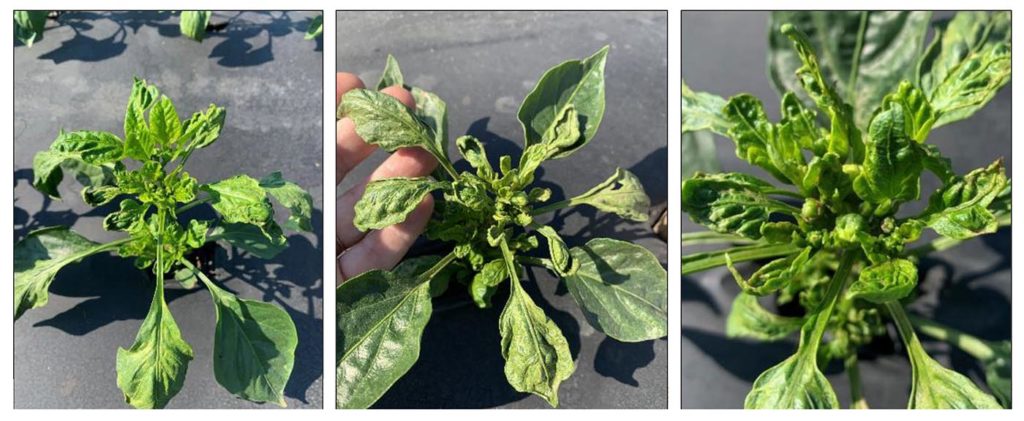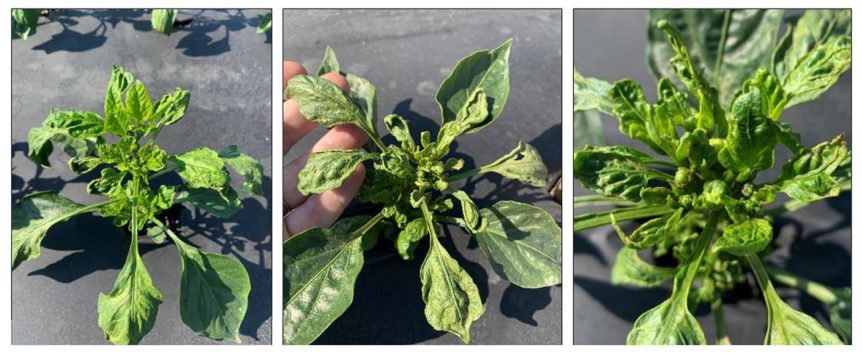
By Frank Giles
Invasive pests are a particular problem for specialty crop growers in the Southeast. Insects find their way through various ports of entry, and the region’s climate is often conducive to their survival and reproduction.

A relatively new pest that is on the move and has growers and the research community on notice is Thrips parvispinus. The pest was first identified in the continental United States in the summer of 2020 in a greenhouse in Orange County, Florida. Since that time, it has been confirmed in Georgia, North Carolina, South Carolina, Colorado, Ohio and Pennsylvania. The spread likely will continue as the pest gets more established in various regions.
In October, the University of Florida Institute of Food and Agricultural Sciences (UF/IFAS) hosted a webinar to share what is known about T. parvispinus and available control options. The webinar was well attended with growers from several states, which underscores the concerns the pest poses.
In early 2022, T. parvispinus was first found in Miami-Dade County, Florida, and got on the radar of Anna Mészáros, UF/IFAS Extension agent for commercial vegetable production in that area.
“We are not exactly sure how it got down here, but it began causing more and more problems for ornamental growers,” she said during the webinar. “By November 2022, we had our first report of the pest in a commercial pepper field in Palm Beach County. This was the first report of the pest in commercial vegetables in Florida and in the continental United States.
“After state and federal agencies confirmed it was T. parvispinus, I visited the field, which was heavily damaged by the pest. The younger leaves and flower buds were destroyed. I had never seen anything like this. The plants were so heavily damaged, even after insecticide applications. The grower ended up losing millions of dollars on that crop in the 2022–23 season.”
Proper Identification
Mészáros said that one field illustrated how important it was to identify the pest and to continuously monitor for its presence, because populations can explode and cause significant damage quickly.
Hugh Smith, UF/IFAS entomologist, spoke during the webinar and said a T. parvispinus specimen should be collected and mounted on a slide and viewed under a microscope for proper identification.
“Once you know you have the species in your fields, you can probably use a hand lens to identify the pest, but initially you need to have it properly identified,” he said.
Focus on Females
Mészáros said there are some characteristics to look for to help identify T. parvispinus in the field, especially the adult female. While the Western flower thrips and Florida flower thrips, which are resident in most fields, have yellow bodies, the female T. parvispinus has a darker-colored abdomen.
“T. parvispinus is very small, but you can easily see the adult female with the naked eye,” she said. “And they have a unique color pattern. Their yellow-to-dark almost black abdomen is a unique bicolor pattern that allows you to distinguish them from other thrips in vegetable crops. The males are yellow and smaller than females and can be easily confused with other thrips, even when you are observing them with a microscope.”
When scouting, Mészáros advised growers to focus on identifying the females. Have a hand lens with at least 10x magnification, but 16x or 20x is preferred.
Inspect All Plant Parts
Scouting begins with the transplants before they go into the ground. After planting, monitor the crop closely, especially if there are reports of T. parvispinus in the area. Mészáros added this species can be found in different parts of the plants than other thrips most growers are accustomed to seeing.
“Keep monitoring for T. parvispinus and other bugs as the season progresses. Also scout the lower portion of the canopy and look for injury on the underside of the leaves,” she advised. “Scout small fruit under the calyx. Also, you should still scout for them in the flower.
“Western flower thrips are almost always in the flower. However, T. parvispinus are often located in the foliage, including the lower canopy of large plants. But from the beginning, they
are mostly on these bottom leaves. That means if you don’t see them in your flowers they might be hiding on those lower leaves. And when you see them in the flowers, you probably already have a high infestation on all your plants.”
Consider Pan Traps
Another method to monitor for T. parvispinus is the use of pan traps. These are typically constructed with a bowl with shallow sides filled with water and soap or a preservative and killing agent.
During the webinar, De-Fen Mou, UF/IFAS entomologist, discussed the use of pan traps for tracking the pest. She said they have advantages over sticky traps.
“This coming season, we are not going to use sticky traps anymore, because the thrips collected from sticky traps are very difficult to almost impossible to identify. That’s because the glue damages the specimen,” she said. “We are collecting a good number of thrips from the pan trap. And we have what we call pan trap 2.0, which we improved by making two holes on the sides. So, when it is raining, the water can drain better and contain the thrips.
“We are planning to do pan trap collection and plant sampling next season. Once again, these thrips populations varied by farm location, the time of season, crop type and farm practices, so continuous monitoring for this pest is very important.”
Management Tools
Julien Beuzelin, UF/IFAS entomologist, gave an update on trials dedicated to chemical control of T. parvispinus. While he said much more research needs to be conducted, early work does indicate some currently available insecticides are effective.
The 2023–24 season was the first year that Beuzelin was able to conduct field trials on the pest. He was able to conduct one trial on cucumber and another on pepper with a grower cooperator in Palm Beach County. Those trials compared several treatments and evaluated T. parvispinus numbers at different intervals after insecticide applications.
The most effective insecticide treatments included Radiant alone and Radiant followed by applications of Transform or Vydate. Treatments generally reduced populations by 70% to 100% at various intervals after treatments.
A third insecticide treatment, Exirel tank-mixed with either Agri-Mek or Cormoran, provided some measure of control, but not as good as the other two treatments.
“In conclusion, we saw Radiant applied once or twice a week for T. parvispinus control in cucumber and pepper was effective in reducing numbers,” he said. “While still effective, there was no clear evidence of the advantage of rotating Transform or Vydate that we could see. Exirel tank mixed with Cormoran or Agri-Mek have potential, but under our environmental conditions, we could not determine the contribution of the different insecticides to control.
“In terms of threshold, we can see T. parvispinus at 0.1 per leaf or 0.2 per terminal on young plants causing substantial damage. You could see the damage associated with the pest. This is a reason for concern. We really need to do more work on management methods. What approaches are best? Foliar applications, transplant drenches or soil injections? And we need to study more insecticides. All this research we still need to do.”










